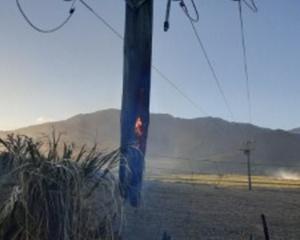
The public looks unlikely to have a say in the biggest government shake-up of the weather forecasting sector in more than 30 years.
That is despite MetService’s urging and tepid support from the Treasury.
MetService initially asked for the Project Hau Nuku review to be open for public submissions and iwi consultation.
Documents show that before the review took place the Treasury was reluctant, but still believed there might eventually be room for public input following any recommendations for change.
On September 26, Science, Innovation and Technology Minister Judith Collins announced the government had "agreed in principle" to Crown research institute Niwa "acquiring" the state-owned enterprise MetService, subject to legal and implementation work being completed.
However, asked about public involvement, a spokesman for Ms Collins told the Otago Daily Times late last week the decision "will not be going through a public consultation".
MetService is understood to have made a long and comprehensive written submission to Project Hau Nuku about the changes it wanted in the sector, although this has not yet been released publicly.
Niwa says it did not provide any written submission.
The reviewers, Sapere, concluded there were only two options for resolving the unnecessary competition and overlaps between the two agencies and for providing a more integrated state weather forecaster — a merger or a new organisation.
Review documents, released publicly late last week, estimate merging the two could save the country up to $139 million over the next 50 years.
However, establishing a new national weather and flood-forecasting agency might only save $50m.
Other possibilities to settle the difficult situation caused by Niwa setting up its own forecasting unit NiwaWeather to compete with MetService, without seeking government approval, were rejected by the reviewers.
These included an option to keep the status quo, but strip Niwa of its forecasting services; and another to bring all weather and hazard forecasting together, which would also have affected GNS Science and the National Emergency Management Agency.
The preferred option, since agreed by Cabinet and announced by Ms Collins, would best use the expertise and systems in place, and "limits the risks to the elements of Niwa outside the weather forecasting system".
"It will require detailed design, drawing on the knowledge and expertise of both MetService and Niwa, to make the most of the opportunity to think afresh about what is needed and how this is focused and organised," the report said.
"It will be extremely important to ensure continuity of services and bring together the relevant skills around a common purpose, considering the most appropriate timing for aspects to be changed, and ensuring operational weather forecasting receives sufficient focus and priority."
Niwa, which has been accused of muddying the waters when it comes to weather warnings and potentially confusing the public, was singled out to "co-ordinate with MetService on its communications and public messaging around severe weather in order to support a single authoritative voice informed by the best available information".
MetService is the World Meteorological Organisation-authorised voice for all severe weather warnings.
The report outlines how Niwa can absorb MetService.
"Niwa’s board would be responsible for overseeing the acquisition of MetService’s shares and the actual transition to an amalgamated entity to support future needs, including any changes to roles, organisational structures, and personnel."
A tentative timeline in the report suggests details for the new forecasting arrangement will be agreed in March, followed soon after by merger clearance, with MetService being removed from the State-Owned Enterprises Act and Niwa acquiring its shares.
The new structure should be in place about June, the report said.
In May last year, MetService chief executive Stephen Hunt emailed the Treasury about opening the process up to the public.
Papers released under the Official Information Act show the Treasury’s reluctance to involve the wider public at that stage.
"Public trust and confidence is a critical component of a national weather and severe weather warning service," Mr Hunt’s email said.
"And the review is currently a Wellington-centric process that could be greatly assisted by not only Māori being consulted, but regional councils and a period for the general population’s submissions too."
In a joint report with MBIE, the Treasury declined Mr Hunt’s recommendation but said it had included in the terms of reference Niwa’s suggestion the review be more "inclusive of Māori needs ... including ways of engagement and channels for Māori in relation to weather forecasting information".
"We do not recommend public consultation as part of the review process.
"Public consultation would require additional resources and extend the timeline of the project by at least six months.
"We also consider that the benefit from public consultation will not outweigh the costs."
However, it was likely that options developed from the review would require "some form of public consultation to take forward".
"We note that these options may require legislative or regulatory change, which would involve public consultation through an appropriate legislative process," the joint paper said.
Officials expected a "moderate level of public and media attention" towards the review.












